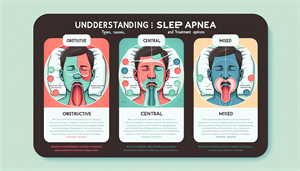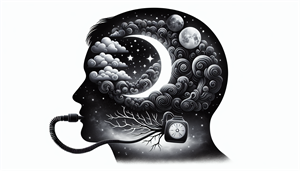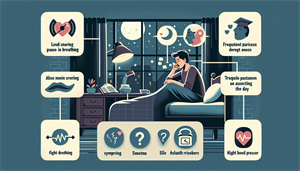
Understanding Sleep Apnea: Types and Causes
How is sleep apnea affecting individuals? This disorder, characterized by intermittent breathing pauses during sleep, can negatively impact sleep quality and contribute to various health problems. The condition extends beyond simple inconvenience, posing potential health risks that require accurate treatment and a commitment to a healthy lifestyle.
There are three categories of sleep apnea: Obstructive sleep apnea (OSA), Central sleep apnea (CSA), and Complex sleep apnea syndrome (CompSAS). Each type arises from distinct factors and requires different treatment approaches.
Obstructive Sleep Apnea (OSA)
Obstructive Sleep Apnea, known as OSA, is the prevailing form of sleep apnea, resulting from a physical obstruction in the airway during sleep. This obstruction commonly arises from relaxed throat muscles or surplus tissue impeding the airflow. Obstructive sleep apnea occurs when these obstructions lead to insufficient oxygen intake and multiple sleep disruptions throughout the night. It is crucial to have obstructive sleep apnea diagnosed to ensure proper treatment and management. This can result in snoring, gasping, and choking, making a full night’s sleep almost impossible.
Central Sleep Apnea (CSA)
On the other hand, Central Sleep Apnea occurs due to a malfunction in the brain stem’s ability to accurately detect carbon dioxide levels in the body while sleeping. Unlike OSA, the prevalence of central sleep apnea is relatively low, estimated to affect fewer than 1% of people. Although less common, CSA is equally crucial to diagnose and treat due to its potential health implications.
Complex Sleep Apnea Syndrome (CompSAS)
Complex sleep apnea syndrome, as the name suggests, is complex in nature and necessitates a comprehensive treatment approach. It is characterized by a combination of both obstructive and central sleep apnea, making its management slightly more challenging. The indicators of CompSAS are akin to those of OSA and encompass snoring, choking, gasping, and restless sleep.
Mild, Moderate and Severe Obstructive Sleep Apnea
Obstructive Sleep Apnea can occur with varying severity, classified into mild, moderate, and severe. The severity is assessed based on the apnea-hypopnea index (AHI), which quantifies the frequency of apneas and hypopneas per hour of sleep. Thus, the frequency of breathing interruptions varies based on the severity of obstructive sleep apnea:
- Mild sleep apnea: 5 to 14 interruptions per hour
- Moderate sleep apnea: 15 to 29 interruptions per hour
- Severe sleep apnea: more than 30 interruptions per hour
These numbers are more than just statistics; they represent the severity of a health condition that can significantly impact quality of life. Effective treatment for sleep apnea can include Continuous Positive Airway Pressure (CPAP) therapy, lifestyle changes, behavioral therapy, and, in severe cases, surgical intervention.


